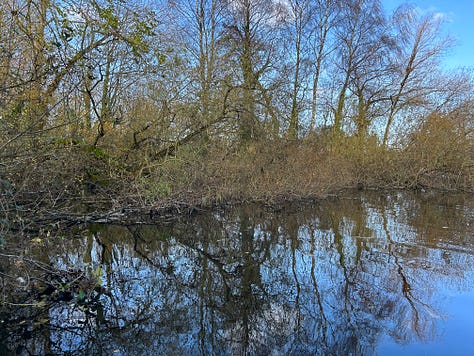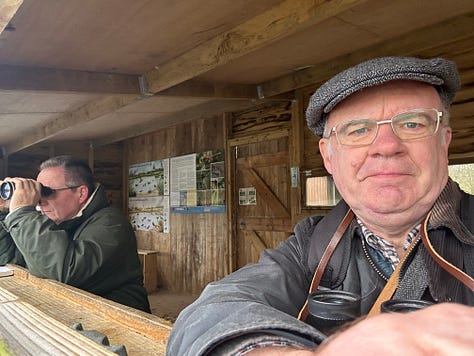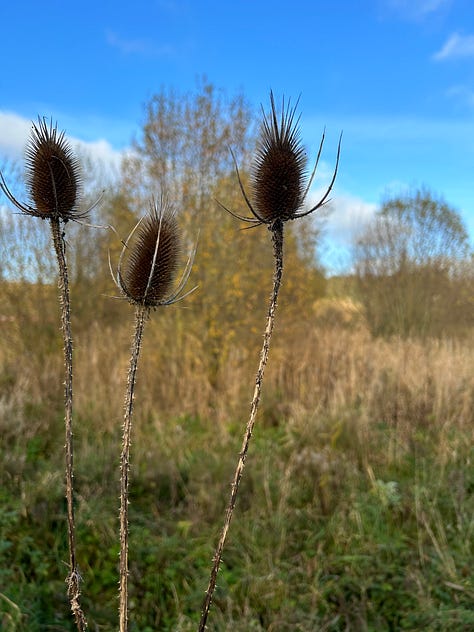At last!
My binoculars get a day out.
Birdwatching at Langford Lakes
Let me tell you a story. It’s a true one.
Back in the 1980s, I was working in the City of Bath. I had seen a pair of binoculars advertised in a magazine produced by the Royal Society for the Protection of Birds. In fact, the magazine was unsurprisingly full of such adverts. The ones that caught my attention were made by Swift. The model was a little unusual then; instead of being the usual 8x30 size, it was 8x44. The 8 is the magnification factor, and the second number is the field of view. The extra field of view is beneficial when bird watching.
I found a shop in the city that sold this very model, and so, one lunchtime, I purchased the Swift “Audubon” binoculars.
In truth, these have had little use over the years and spent most of their time within the leather case they were supplied with. I don’t know why. Sometimes, things happen, and the binoculars have lived in a wardrobe for much of their life.
Recently, I decided to change that. I invited a friend, Paul, who I know likes to birdwatch. I am no expert, so having Paul along would be an excellent way to spend time together and tap into his knowledge.
I have once before visited Langford Lakes to see what they were like. It wasn’t a birdwatching trip but rather a walk around the lakes. There is a cafe, which draws people in and gives them a lakeside view. The lakes are situated at Steeple Langford, a Wiltshire village around 10 miles northwest of Salisbury.
The four lakes have been formed from the holes left by gravel extraction in the 1960s and 1970s. The Wiltshire Wildlife Trust acquired the lakes in 2001 and has done much work to create a habitat for birds and other wildlife. Having such an industrial landscape and returning it to nature is a wonderful thing.
It started as a grey November day for our visit; the sun shone through later. A cold wind is blowing from the north, and one gentleman taking photos said, “The colder it gets, the more birds find their way here for food.” Birdwatchers in the UK like hot and cold weather as different birds migrate to these climates.
There are several bird hides where we can sit and focus our attention on the birds. One of the amazing things we encountered was an incredible aerial display by five red kites. The birds twisted and turned, and our binoculars enabled us to see the wonderful colours of their feathers enhanced by the low late autumn sunshine.

On the lake, the usual flotilla of mallard ducks abound. Looking carefully, I can see gadwall and teal amongst the crowd. Sitting in the hide with the binoculars is relaxing, bringing the wildlife closer. Many cormorants have taken up residence, and some trees are full of them. Somehow, they precariously balance their tall bodies on the thinnest of branches. Who needs to pay to see circus acts when you can see these fellows for free?
An information board taught me something I had never heard of before. Paul and I were looking at some stonework in a field and debating as to what it could have been. Fortunately, the board we discovered told the story. Hundreds of years ago, this was a sluice gate to manage the fields. Water was stored in reservoirs fed by the local springs. At the start of the growing season, the sluices would be opened. The water was full of nutrients and would flow onto the fields, serving two purposes - food and water.
Here’s a nice little fact: The person who controlled the flow of the water by operating the sluices was called a drowner.
The fields onto which the water would flow consisted of long ditches to control the water. The raised ground between the ditches is the area for the crops to grow—an amazing system from the 17th century. In the photo below, notice the stone wall, forming an island, and at either side to the left and right would have been sluice gates.
There are little surprises as we walk around the site, one being a footpath leading to the river where visiting children can paddle (appropriate footwear required) and search for insects and fish in the clear water flowing over the gravel riverbed.
Click on an image for the full-size view.



The cafe has a good reputation in the area, but for lunch, Paul and I took our sandwiches and flasks. The prices seemed very reasonable when I looked at the menu, so if you do visit, a stop here is a good option. Check for opening times on the website.
We had a very relaxing time. There is something about being in the peace and quiet of the countryside, and certainly, I would love to go birdwatching again soon.
See below for some more photos from the visit.









Thank you for being a subscriber!
If you would like to read Roland’s Travels on your phone or tablet, try the Substcak app. It’s free to download and use.








Mine are still in their case since the 1990's. Old Atlas 10×50 just too heavy for bird watching. I also have a pair of Weavers 10×50 which I do use for spotting on the odd outing. Thanks for the post Roland and I do hope you are well.